#tongva people
Text



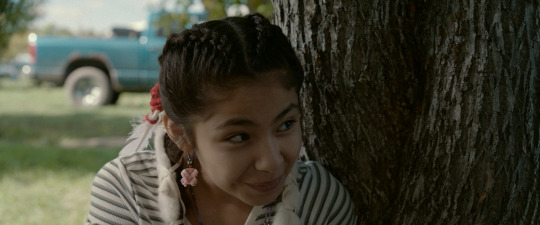
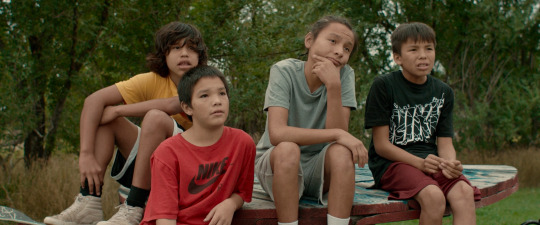

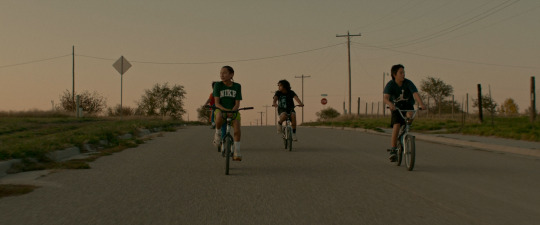



War Pony (Gina Gammell & Riley Keough, 2023)
#war pony#gina gammell#riley keough#oglala lakota#pine ridge#native people#sioux#female directors#female directed films#female filmmakers#female film directors#women in film#tongva people#oceti sakowin
82 notes
·
View notes
Text
Indigenous People's Day
I am an immigrant to the land of the Tongva, aka the Gabrieleno Band of Mission Indians.
Californians know this area as Los Angeles County, Orange County and the Channel Islands.
There's many photos and videos teaching and sharing their history and traditions on the website linked above. Here's one.
youtube
17 notes
·
View notes
Text
And now for something a little different:

(Yes, this is what I’ve been working on for the past while.)
For context:
The story of the Golden River—’Onochok in Kochachi, Kingawa in Nikkeijin Japanese—with its five rivers, its seven great cities, its many-buttressed buildings and sacred isles—is a complex one, as is the story of the Nikkei-jin, the Japanese settlers who became the greatest rivals of the people of the Bay. But they are not alone, in the story of this continent. Nor can what happened to them truly be divorced from events elsewhere in the known world.
The continent of HESPERIA lacks much in the way of domesticable animals, but there was one key exception—camelops celeris, which the Bay would call ’espeli (plural ’espelik) but most of the world would come to call nayoomee. Large and llama-like, the nayoomee would provide meat, wool, and perhaps most importantly a suitable mount. Camelops c. occidentalis, the variant found on the western coast of Hesperia, would come to be used by the ancient Hokan pastoral peoples, giving them an edge against the Yok-Utian agriculturalists…at least at first. It would also give the ancient Inawemaaganic [Algonquian] tribes on what another history would call the Columbia Plateau a key boost in their expansions across the continent to the west.
It is with these people—or with a descendant people, the Nnu [Mi’kmaq]—that the next stage of the story takes place. Because in the year 1000, a ship came from the northeast of the world, bearing warriors from a faraway land, a strange faith, strange new animals—and strange diseases. Smallpox in particular did a lot of damage—tore the Wóšnathípi Empire to pieces, ended the cult of the Bird-Men, nearly destroyed the power of the Turtle Cities of the Great Lakes, and left piles of burning corpses brightening the night in the Bay, among other effects. Key to all this, though, is that the people of the urban civilizations of Hesperia survived. And those who did now had a boost against the sicknesses of the Other World.
The story continues in 1251, when a group of Tau raiders—whom another history would call the Inuit—made their way across the Strait and traded with Japan and China. North China, anyway; the Mongol Conquest was still ongoing at the time. Unfortunately, the Tau brought a disease of their own with them, which English speakers would come to call alcom: a herpesvirus causing diarrhea, spots, and febrile seizures, and then, as little as four months or as much as five years later, inflammation of the body—including fatal encephalitis. It was this sickness, also called the Red Death, which among other things stopped the Yuan from getting all the way south, saved the city of Baghdad (by forcing a recall of the armies), ensured the presence of Christian kingdoms in Palestine and Muslim principates in Iberia for centuries to come, and meant that the population had already dropped by a full fifth across Eurasia when bubonic plague came along not too long later.
It would be a much more haggard, somewhat more fervent, world which was set to unite in 1485, when Kuroda Kiyoshi, frustrated at the Mongol omnipotence in trade, was granted permission by the Emperor Go-Tenji (Yamahito) to seek an alternative trade route with the faraway land of Europe. After being at sea for thirty-nine days, on the fortieth they came to a great bay, filled with sacred islands and surrounded by cities of stone and mud.
In keeping with a time-honoured tradition across the multiverse, he deemed it France.
***
Hesperia will have had three and a half thousand years of recognizable “civilization” (large-scale agriculture, cities, literacy, metallurgy, epidemic disease, war) by the time the worlds collide. The countless cultures to have risen and fallen in that time could fill a book—and in this world and ours they already have. But for simplicity’s sake, let us divide the world into six portions.
KAWIINI, the “centre-world”, marks the western coast of the continent, along the edge of the Assinotie Mountains (which another history would call the Rockies). This is where the nayoomee was first domesticated; this is where tule reed was first stamped into paper scrolls; this is where the first outbreak of alcom occurred; this is where one of the continent’s three major religions, HOYOHHA, would develop. The region of Lokloni, the “Great Valley”, contains four great powers constantly one-upping each other in trade and warfare. The KOCHACHI, whom another history would call the Miwoks, hold sway here, the Earth-King and Water-King in Hulpu-Mni (our Sacramento) controlling the massive river valley to the north and (more importantly) four of the Seven Cities around the Bay. The other powers worth mentioning are the SHUURVITAM [Tongva and nearby Takic peoples] to the south, whose great city of Iyáanga would later be described as a “Babylon in Paradise”, and the TAU, Hesperia’s first intercontinental empire.
TUUWAQATSI is slightly to the east, in the Assinoti Mountains themselves. Cliff-cities were being built here before almost anywhere else on the continent; the arrival of the nayoomee, and more importantly domesticated bighorn sheep, did wonders for the local economy, as did goosefoot and sunflowers and, later, maize, beans, and squash. Currently most of the land—and a good chunk of the plains to the east—is under the control of the TINTA IMPERIUM, whose dominant inhabitants call themselves the Nemi and are called the Shoshone in our timeline. Of mention are the DINÉ, the Navajo, who have maintained a reasonable presence despite the efforts of the Eight Mayors, and the ÂSHINI [Zuñi] and HOPI, both of whom are considered de facto independent peoples within the Tinta Imperium thanks to the prominence of their cities.
ÑÍTA is what our world would call the Mississippi River Basin, with much territory on the eastern coast and the western plains; perhaps it would be fairer to call it the home of the Mississippian Cultures instead. Here grow sunflowers and goosefoots, amaranth and squash; here a species of dwarf bison was domesticated for meat and wool, becoming immensely valuable; here rose the cult of the Bird-Men, in recent centuries overthrown. Currently the ancient city of Omašté, ruled as ever by the ancient WAPKÁTXUNGWANG (called the Lakota in our own timeline), has recovered most of its former territories after the Scabbing (smallpox epidemic). But further to the south the OKLA (Choctaw) have begun spreading their own faith, HVSHI ANOWA, along with their Horsemen, uniting the Riverlands by something other than mercantile cunning or brute strength. Ugedaliyv, homeland of the ANIYVWIYA’I [Cherokee], has broken away, seemingly for good—so long as the Ongweh’onweh (Iroquois) don’t make a move in their direction. And as always, there are the SEA COUNTRIES: Aphópkee, Hótvlee-Tv’lwv, Chitkohòki, and Kuht’hanut, caught between too many powers and just wanting a relatively quiet life.
AKIIWAN is actually a ridiculously large region, from the Atlantic to the Arctic, and almost all of it is Cree. NĒHIRAW, that is; they are perhaps the oldest continuous INAWEMAAGANIC culture, keeping to their ancestral patterns of semi-nomadic migration from buried city to buried city, all across the northern grasslands and into the taiga. But although the largest, they’re by no means considered the most influential. No, that would be the circuits of GAMEEN, the land around the five Great Lakes which would come to be known as Gameen in time. The BII’WEG, our Ojibwe or Anishinaabeg, were the first to domesticate lake rice, and the first to smelt arsenic bronze, and the second to adopt ironworking. Their main religion, NANDOWIN, has spread far across the continent; most of the Nēhiraw have synchronized to it, and even the arrival of the Vinlanders couldn’t stop the NNU from seeking the Answers they wanted. The VINLANDERS themselves have all but fully integrated into Nnu society; both their language and that of the Nnu are spoken equally at the great Althing in Kyrvik/Welta’qase’g (and most places have two names, too). Their trading (and raiding) empire stretches as far north as Nucho, Baffin Island in another time, and as far south as the Bawa Sea. And they’ve come at last to an uneasy truce with the Bii’weg, at least until the whole mess with the ONGWEH’ONWEH [Haudenosaunee] is sorted out.
The tropical BAWA SEA has long been dominated by the TAÍNO, whose ship-building has moved from dugout canoes to junk-like ships with cotton sails and mahogany hulls. The cacicazgos of the four main islands have a strict policy of peace on land. …and technically on water, too, but normally they just end up hiring Huasteca, Carib, Tupi, Okla, or Vinlandic pirates to capture each others’ ships. Captured Taíno are ransomed; captured pirates are sold, or brought back to work on plantations. For the Taíno, thanks to the Tupi, are now Hesperia’s main source of KYE, an extract of stevia rebaudiana up to 300 times sweeter than sugar. People in the north will pay a small fortune for the chance at even a taste; it is small wonder that when Malinese explorers come this way, they will name it the Digeji—the Sea of Honey.
ANAHUAC is a world of its own. The NAHUA peoples made their way south some time ago, riding nayoomee and herding peccaries through the desert and introducing steeds and sickness alike to the various civilizations to the south while pinching the secret of bronze from the Purépecha. These days, the Nahua—or more precisely the MEXICA—rule a decent chunk of the country that would in another world (and another time) be called Mexico, under three great kings on their island city of Nopalla. The only real contenders are the ZAPOTECS and MIXTECS, who remain among the few places the Mexica have not been able to bring under tributary sway, and the MAYA, disparate jungle city-states who survived the plagues and general collapse and have begun trading chocolate and jade with the Taíno to the north and the Tupi to the south. The Mexica are known historically for their logistics, nayoomee being excellent tools for message delivery, but in the past few decades the capture of human sacrifices has been getting a little too much for subject people who can’t understand why they don’t just eat their giant dogs instead. Still, it’s not all bad; perhaps it just needs some shaking up…
#alternate history#Kingawa#aboriginals#first nations#canada#california#maps#indigenous people#for want of a nail#you know how many languages I’ve been having to learn for this thing?#the answer is both so many and too few#anyone have a decent Lakota grammar they can suggest#aztecs#ojibwa#vinland saga#miwok#Tongva#lakota#more work to do
6 notes
·
View notes
Text
A Sparkling Gem All Can Enjoy: The Uniqueness of "City of Ghosts"

On March 5, City of Ghosts, an animated series created by Elizabeth Ito, formerly a supervising director of Adventure Time, premiered on Netflix. This series was positively received for its pacing, humor, voice cast, and animation style. Even though it has been over a month since it premiered, the show continues to be relevant, tackling topics which expose uncomfortable truths about our society.
Reprinted from The Geekiary, my History Hermann WordPress blog, and Wayback Machine. This was second article I wrote for The Geekiary. It was originally published on May 26, 2021.
Set in Los Angeles, City of Ghosts is about four kids who are part of the Ghost Club: Zelda, Thomas, Eva, and Peter. All four travel across the city, interviewing ghosts about their lives, adding the recordings to something called the "Ectopedia." Beginning in the first episode, the Ghost Club meets at a branch of the Los Angeles Public Library, sitting under a table, discussing how to find the ghosts.
Each episode focuses on a part of Los Angeles not often talked about, part of what Wired calls a "multicultural mélange." This includes Jo, a Filipina chef who owns a café in Boyle Heights, Sonya, the owner of a vegan café who teaches children poetry in the evenings, and Yulissa, a teacher at a music school who is trying to teacher her kids Oaxacan music. The show, which is for those age 5 and up, proposes a new way of thinking about history, ethnicity, and cities, while remaining educational in an engaging way.
The series tackles cultural appropriation, gentrification, discrimination, and historical erasure, while remaining what some call a "lovely…vision for children’s entertainment" and a "gentle love letter" to L.A. itself. For example, in the third and fourth episodes, the Ghost Club learns about Leimert Park and the Indigenous people of L.A., the Tongva. In the latter case, there is discussion of colonization, extraction, development, and language erasure by White settlers of areas where the Tongva lived. The Ghost Club then expands their map of the city to include all the Indigenous names, while Jasper (voiced by Honor Calderon) connects with the land and their heritage, learning to speak Tonga in the process. Other episodes focus on skateboard culture, the horrors of Japanese incarceration in World War II, a marionette puppet theater, and a whistling ghost who speaks in Zapotec.
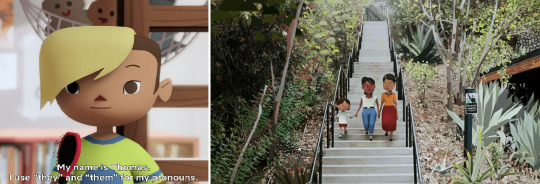
This "warm and huggable" series has subtle, but significant, LGBTQ representation. In the beginning of the second episode, Thomas, the artifact specialist of the Ghost Club, voiced by Blue Chapman, a transgender child actor, says they use they/them pronouns. In an interview with Vulture, Ito confirmed that Thomas is non-binary, saying she hoped to expand their story more in the future. She expressed her joy that Netflix was fine with Thomas being non-binary. She also revealed that some dialogue in the first episode were re-recorded so that fellow actors would be using the right pronouns for Thomas. Additionally, in the fourth episode, Jasper is shown with two moms.
Despite the diverse storytelling in this unique series, Ito has hinted that the show will not come back for a second season. She has written that people should not get their "hopes up for more City of Ghosts," and that her "well of motivation is running low." Even so, there has been calls on social media platforms, like Twitter, for the series to return, something which Ito supports. Whether Netflix picks up the series for a second season or not, it remains a sparkling gem that all can enjoy.
© 2021-2023 Burkely Hermann. All rights reserved.
#city of ghosts#elizabeth ito#adventure time#los angeles#oaxacan#filipinas#wired#cultural appropriation#gentrification#discrimination#historical erasure#children's animation#children's entertainment#tongva#japan#japanese incarceration#puppets#White settlers#indigenous people
5 notes
·
View notes
Text
Tribes welcome return of ancestral lands
Tuesday, February 14, 2023
By Kevin Abourezk, Indianz.Com
Kimberly Morales Johnson can’t help but imagine the land that today is Los Angeles as her ancestors would have seen it centuries ago. The Tongva people used the canyons of the San Gabriel Mountains as trading routes with the indigenous people of the Mojave desert. Last year, the Tongva reclaimed land in Los Angeles for the first time in almost 200 years after being forced to give up their lands and having their federal status terminated by President Dwight D. Eisenhower in 1950.
Sharon Alexander, a non-Native woman, donated a one-acre property in Altadena, California, to the Tongva after learning about the #LandBack movement during the 2016 Democratic National Convention and discovering that the Tongva were the original inhabitants of Los Angeles.
Johnson, vice president of the Tongva Taraxat Paxaavxa Conservancy, a nonprofit set up by the community to receive the land, said the tribe has big plans for the property. “It needs a lot of work, but we’re all dedicated to it,” she said.
In 2022, thousands of acres of private and public land in America were returned to the care of Native peoples. Many of these lands were returned to their original inhabitants, including the one-acre property in Los Angeles.
A website called the Decolonial Atlas created a “Land Back” map charting the locations of land returns that occurred last year. Other land returns that occurred last year include 40 acres around the Wounded Knee National Historic Landmark, the site of the 1890 Wounded Knee Massacre. The Oglala Sioux Tribe and the Cheyenne River Sioux Tribe bought the land for $500,000.
“It’s a small step towards healing and really making sure that we as a tribe are protecting our critical areas and assets,” Oglala Sioux Tribe President Kevin Killer told The Associated Press.
Although not a land return, the Biden administration last year signed an agreement giving five tribes – the Hopi, Navajo, Ute Mountain Ute, Ute Indian Tribe of the Uintah and Ouray Reservation, and Pueblo of Zuni – greater oversight of the 1.3-million acre Bears Ears National Monument in Utah.
Last year, the Rappahannock Tribe celebrated the return of more than 400 acres along the Rappahannock River that is home to a historic tribal village named Pissacoack and a four-mile stretch of white-colored cliffs.
“Your ancestors cherished these lands for many generations and despite centuries of land disputes and shifting policies, your connections to these cliffs and to this river remain unbroken,” Secretary of the Interior Deb Haaland said at an event celebrating the land return. One of the largest land returns last year involved the purchase of more than 28,000 acres by the Bois Forte Band of Chippewa Tribe in Minnesota.
The Conservation Fund, an environmental nonprofit, sold the land to the tribe after purchasing the land from a lumber manufacturer in 2020. Emilee Nelson, Minnesota associate state director of The Conservation Fund, said her organization bought the land from the PotlatchDeltic Corporation after the company decided to divest of much of its Minnesota land holdings. The Conservation Fund bought 72,000 acres from the company, including 28,000 acres that were within the Bois Forte Reservation. The Boise Fort Band lost the land following passage of the Dawes Act of 1887, which led to the allotment of the land to private landowners. “Where this land was located made a lot of sense for the tribe to own it,” Nelson said.
However, he said, tribes don’t always want to purchase land or even accept a land donation, especially if they don’t think they’ll be able to put it into federal trust status. He offered advice to those considering donating their land to a tribe. “If you want to make a donation, sell the land and make a donation,” he said.
As for the one-acre land donation to the Tongva, Kimberly Morales Johnson said the tribe plans to use the land to create a community center where it will be able to host cultural workshops and where Tongva people will be able to gather plants sacred to their people, including the acorns from the oak trees on the property.
“This is about self-determination and sovereignty,” she said. The tribe is also allowing a tribal artist to live on the land and take care of it, she said. The Tongva have also begun working to return Native plants to the property and remove invasive species.
“This whole LandBack movement is rooted in healing, and instead of looking at land as a commodity, we’re looking at it as a way to have a relationship with the land and with each other and bringing back our traditions, our language, our food, our culture,” she said.
200 notes
·
View notes
Text

💥 LEFTOVERS OPEN! 💥
Our leftover sales are now officially open until December 5, 10 PM PST or while supplies last! Our PDF will be available throughout the entire duration of our leftover sales!
Get them here: https://vashwoodzine.bigcartel.com/
All physical orders will include one random photocard (deco sticker sheet not included), while supplies last! We will not plan any reruns of the zine, so make sure to grab 'em if you haven't already!
You will receive an email with your order confirmation number upon purchase. Packages will be shipped within 3-4 days. PDFs will be emailed within 24 hours of your order.
All profits from the leftover sales will go toward the Tongva Taraxat Paxaavxa Conservancy, a non-profit dedicated to helping the indigenous Tongva people!
https://tongva.land/
If you have any inquiries, the best way to reach us is via email at [email protected]! Thank you all so much for your tremendous support! Love and peace ❤️🖤
32 notes
·
View notes
Audio
Listen/purchase: Corrido de Gloria Arellanes by Alice Bag
***100% of funds from downloads of this song will go to the Gofundme for Gloria Arellanes.***
Gloria Arellanes has been an inspiration to me. I wrote this song with Quetzal Flores several years ago. I wanted to use the Mexican corrido format for passing down an oral history through music. I think it is an especially important tool for women and people of color whose stories are oftentimes untold or erased.
Gloria Arellanes, a political activist, was one of the first women to join the Brown Berets during the Chicano Movement, as well as a co-founder of Las Adelitas de Aztlán. Similar to the Brown Berets, Las Adelitas de Aztlán strove to assist its community members in creating awareness for better bilingual education in Los Angeles as well as protesting against the Vietnam war. She is also a respected Tongva Elder of the first nation of the Los Angeles Basin & has fought for preservation of the indigenous people of Los Angeles. Now that she is in need of around-the-clock care, we are reaching out to the community she has spent her life serving. If you are unable to donate, please consider sharing this post and the love.
8 notes
·
View notes
Text
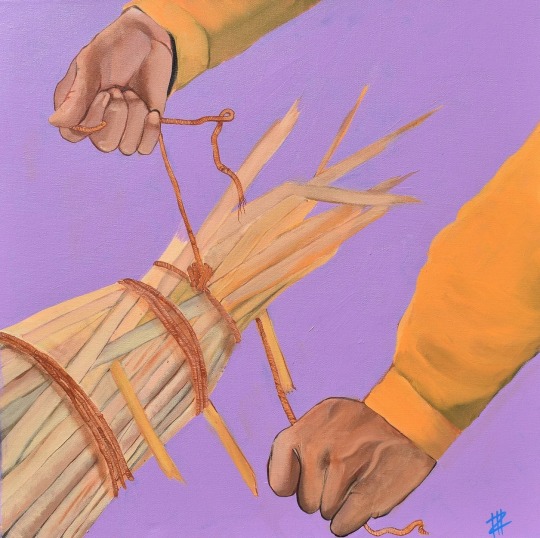
Tule Boat Launch
Monica Zavala (Gabrielino/Tongva Nation, Acjachemen, and Mexican)
acrylic on canvas. 24” x 24”
Dr. Stan Rodriguez, a luminary in the Kumeyaay community, has served as an extraordinary mentor, generously imparting his vast knowledge to those eager to learn. Among the many enriching experiences I've had, one that stands out is the annual tule boat launch event that Stan orchestrates with finesse.
In the lead-up to the launch, a dedicated team of participants seizes the opportunity to craft these unique vessels. I had the privilege of capturing this intricate process, showcasing the deft hands of Dr. Stan Rodriguez guiding the creation of a tule boat. His wisdom, combined with the hands-on involvement, encapsulates the essence of this ancient tradition, fostering a deep appreciation for the artistry and heritage of the Kumeyaay people.
8 notes
·
View notes
Text
Many of my Okinawan relatives, including one great-uncle, came to the United States via Revolutionary Mexico. Morisei Yamashiro became a farmworker and labor organizer in the fields of Southern California’s Imperial Valley. There, Okinawan, Japanese, Chinese, Black, Filipino, South Asian, Indigenous, poor white, and Mexican workers labored [...]. According to his son, Morisei could speak several languages including English, Spanish, Japanese, and Okinawan dialects [...]. Before the internment of Japanese and Okinawan Americans, there were early FBI raids on the communities. Labor organizers were among the first to be targeted. [...]
This story was provocative for several reasons. I knew of the world of the Revolutionary Atlantic and the radical currents which produced what Julius C. Scott calls the “common wind” of abolition. I first wondered if there might be a story to tell about the Revolutionary Pacific and the influence of the Mexican Revolution upon it. [...] [T]he story invited me to think anew about internationalism, which I understand as a recognition of the ways that people have been unevenly waylaid by the global capitalist system and developed forms of revolutionary solidarity to confront it.
---
To consider these provocations, I examined the reflections of another Okinawan migrant, Paul Shinsei Kōchi, who had traveled a similar path [...]. Kōchi’s memoir Imin no Aiwa (An Immigrant’s Sorrowful Tale) [...] describes how he found internationalism in Revolutionary Mexico. It details his escape from Okinawa and from the surveillance and repression of imperialist Japan; his solidarity with Indigenous Kanaka Maoli in Hawai‘i, with Tongva people in California, and with Yaqui in northern Mexico as well as with Indian, Chinese, and other Asian immigrants and with Mexican peasants in the revolution; and his subsequent position of internationalism.
“Paul Kōchi’s story demonstrates how the uprooted, dispossessed, and despised of the world came to know each other in shadows, in the tangled spaces of expulsion, extraction, transportation, debt, exploitation, and destruction: the garroting circuits of modern capital. Whether crammed in tight ship quarters; knocking together over the rails; [...] in the relentless tempo of industrial agriculture; inhaling the dank air of mine shafts; [...] coughing, fighting, singing, snoring, and sighing through thin walls, or corralled [...] in jails and prisons, the contradictions of modern capital were shared in its intimate spaces. Within such sites, people discovered that the circuits of revolution, like the countervailing circuits of capital, were realizable in motion, often through unplanned assemblages. Roaring at their backs were the revolutionary currents of the late nineteenth and early twentieth centuries, currents that howled from the metropolitan hearts of empire and wailed across the peripheries of the global world system. Standing before them, in the middle of its own revolution, was Mexico. From the vantage point of these struggles, the new century did not simply portend the inevitability of urban revolts and insurgencies at the point of production, but an epoch of peasant wars, rural uprisings, anti-colonial movements, and, of course, the Mexican Revolution. Mexico, as both a real country and an imagined space of revolution, would become a crucible of internationalism [...].” (51–52) [...]
---
From farm worker strikes at the U.S.-Mexico border; art collectives in Chicago, Harlem, and Mexico City; and a prison “university” in Leavenworth Federal Penitentiary, [...] the Mexican Revolution staged a significant set of convergences within which internationalism was “made.” [...]
“The Internationale” (1888) [...]. Famously, Frantz Fanon took the second line of the song, “Arise ye wretched of the earth,” to title his indictment of colonialism in and beyond French Algeria, Wretched of the Earth. [...] [U]nless a radical tradition was “able to constantly keep alive that challenging, questioning and probing of the real scene around it,” it would only ever be [...] a snare of revolutionary nostalgia where hope is trapped and strangled, rather than a living, breathing tradition that might allow us to survive (Healey and Isserman 1993, 13–14). This is perhaps the central lesson [...], to think of internationalism not simply as scripture imposed from above, but as the messy work of collectively making and remaking the world in which we live.
---
Text by: Christina Heatherton. “How a Family Story Reframed My Understanding of Internationalism and Revolutionary Solidarity.” UC Press Blog. 3 April 2023.
50 notes
·
View notes
Text
Banned Native-Authored Children's Books (because of MAGA zealots)
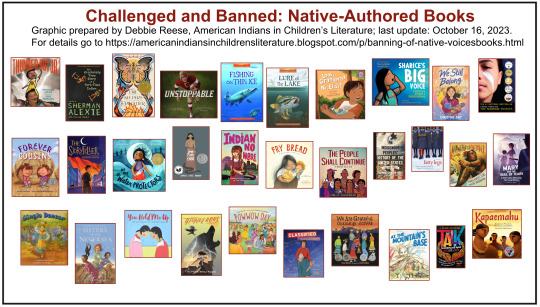
Firekeeper's Daughter written by Angeline Boulley (Sault Ste. Marie Tribe of Chippewa Indians)
Unstoppable: How Jim Thorpe and the Carlisle Indian School Football Team Defeated Army written by Art Coulson (Cherokee); illustrated by Nick Hardcastle (not Native)
Look, Grandma! Ni, Elisi! written by Art Coulson (Cherokee), illustrated by Madelyn Goodnight (Chickasaw)
Fishing on Thin Ice written by Art Coulson (Cherokee)
Lure of the Lake written by Art Coulson (Cherokee)
Sharice's Big Voice: A Native Kid Becomes a Congresswoman by Sharice Davids (Ho-Chunk); illustrated by Joshua Mangeshig Pawis-Steckley (Wasauksing)
We Still Belong by Christine Day (Upper Skagit); cover art by Madelyn Goodnight (Chickasaw)
The Marrow Thieves by Cherie Dimaline (Metis Nation of Ontario)
Forever Cousins by Laurel Goodluck (Mandan, Hidatsa and Tsimshian member); illustrated by Jonathan Nelson (Diné)
The Storyteller by Brandon Hobson (Cherokee)
We Are Water Protectors by Michaela Goade (Turtle Mountain Ojibwe); illustrated by Michaela Goade (Tlingit)
A Snake Falls to Earth by Darcie Little Badger (Lipan Apache)
Indian No More by Charlene Willing McManis (Confederated Tribes of Grande Ronde); cover art by Marlena Myles (Spirit Lake Dakota/Mohegan/Muscogee)
Fry Bread: A Native American Family Story by Kevin Maillard (Seminole); illustrated by Juana Martinez-Neal (not Native)
The People Shall Continue written by Simon Ortiz (Acoma Pueblo), illustrated by Sharol Graves (Absentee Shawnee Tribe of Oklahoma).
An Indigenous Peoples' History of the United States, for Young People by Debbie Reese (Nambé Owingeh) and Jean Mendoza (not Native), adapted from the original edition written by Roxanne Dunbar Ortiz (not Native)
Fatty Legs written by Margaret-Olemaun Pokiak-Fenton (Inuvialiut)
Hiawatha and the Peacemaker written by Robbie Robertson (Mohawk), illustrated by David Shannon (not Native)
Mary and the Trail of Tears by Andrea Rogers (Cherokee)
You Hold Me Up by Monique Gray Smith (Cree), illustrated by Danielle Daniel
Jingle Dancer by Cynthia Leitich Smith (Mvskoke), illustrated by Cornelius Van Wright (not Native) and Ying-Hwa Hu (not Native).
Sisters of the Neversea by Cynthia Leitich Smith (Mvskoke), cover illustration by Floyd Cooper (Mvskoke)
Thunderous written by M. L. Smoker (Assiniboine and Sioux tribes of Montana's Fort Peck Reservation) and Natalie Peeterse (not Native); illustrated by Dale Ray DeForest (Diné)
We Are Grateful written by by Traci Sorell (Cherokee Nation), illustrated by Frane Lessac (not Native)
At the Mountains Base written by Traci Sorell (Cherokee Nation), illustrated by Weshoyot Alvitre (Tongva, Cahuilla, Chumash, Spanish & Scottish)
"The Way of the Anigiduwagi" written by Traci Sorell (Cherokee Nation), illustrated by MaryBeth Timothy (Cherokee) in The Talk: Conversations about Race, Love and Truth edited by Cheryl and Wade Hudson
Classified: The Secret Career of Mary Golda Ross, Cherokee Aerospace Engineer written by Traci Sorell (Cherokee); illustrated by Natasha Donovan (Metis)
Powwow Day written by Traci Sorell (Cherokee); illustrated by Madelyn Goodnight (Chickasaw)
Kapaemahu written by Hinaleimoana Wong-Kalu (Kanaka Maoli), Dean Hamer (not Native), and Joe Wilson (not Native); illustrated by Daniel Sousa
[Full List by Debbie Reese]
#banned books#fuck maga#Native American#Native Hawaiian#Indigenous#books#Debbie Reese#Hinaleimoana Wong-Kalu#Dean Hamer#Joe Wilson#Daniel Sousa#Natasha Donovan#Traci Sorell#MaryBeth Timothy#Cheryl Hudson#Wade Husdon#Weshoyot Alvitre#Frane Lessac#Dale Ray DeForest#Natalie Peeterse#M. L. Smoker#Cynthia Leitich Smith#Floyd Cooper#Robbie Robertson#David Shannon#Monique Gray Smith#Danielle Daniel#Cornelius Van Wright#Ying-Hwa Hu#Andrea Rogers
7 notes
·
View notes
Text
Not Vico Ortiz coming for my entire heart on last year's Thanksgiving...


[ID: An Instagram post by Vico Ortiz. It is a picture of them looking at the camera, with a beard filter on. The caption says:
"Portrait of a Cuir Boricua in Tongva land (known also as Los Angeles). This "holiday" is whatevs, but take this day (and everyday) to make yourself aware of the stolen land you are currently settling in. To honor Native ancestors and the struggles of Native peoples to survive today. It is a day of remembrance and spiritual connection as well as a protest of the racism and oppression Native Americans continue to experience.
Being Puerto Rican: Pre-colonial Taíno culture was not well documented by the Spanish. Because of this, when the Spanish severed the Taíno society, they also cut off a large chunk of their past.
Trying to reclaim ancient practices of my people is not an easy task, largely because of how little information there is about Taino people. But I know their stories live in my blood and they activate whenever I play or listen to our music. I'm grateful for them. I'm grateful for their guidance, their strength, their resilience, their liveliness.
I recognize I inhabit a body that carries both the colonized and the colonizer. And that's ok.
Happy Thursday, Uncle Vico". End ID]
Thanks to @tothetrashwhereibelong for the image description!
124 notes
·
View notes
Note
hi! have you written anything about “nooksack” being the the name of a native american tribe in the pnw? do you think that is happenstance, or somehow related?
I'm inclined to say happenstance since it's not clear to me what purpose a reference to Native Americans would serve in reframing "nooks"... though I have wondered if Native Americans are being misrepresented anywhere. Hiveswap leans heavily into the mythology of central America, and the troll named after the Tongva tribe is seemingly dead on arrival in Act 2... occasionally I've see people accuse Equius of being an anti-Indigenous stereotype (based on his arrows, I think?) but I don't recall being persuaded by any of them. Maybe I should dig one up, it's piquing my interest how close Indigo is to Indigenous.
in Homestuck proper the phrase "weird aliens called Indians" comes up in reference to Peter Pan, and Rufio carries forward the symbolic role of RED originally held by the Native Americans (in the Disney version at least, the notion of red skin was deployed to talk about envy). You might think this would give Rufioh a role in the colonialism conversation comparable to Damara's, but I'm not sure about that either...
Anyway, idk about "nooksack" but I wouldn't be surprised if there were a more references to Native Americans in the story than I'm presently aware of... the only other incident that comes to mind is Eridan has a hell of a time with the word "powwwwoww"
11 notes
·
View notes
Text
Hiveswap friendsim race/ethnicity/nationality headcanons
This is pretty much based off the etymology of their names which is why a lot of them are kinda white (specifically Greek bc of Greek mythology references) but it’s also based on what ever culture and pop references their routes have as well. A lot of it is very American but I guess that makes sense considering it was made in America.
Disclaimer: I’ve tried to look it up but I don’t know how you would refer to most central and South Americans racially. I know Latina/Latino is more of an ethnicity from what I can find and I’m not sure if mestizo is the right term either. I’ve decided to just stick with Latina/Latino since I think more people are familiar with those terms but just know that when I use that term I’m referring to people of mixed white (de facto Spanish) and Amerindian descent
Ardata: latina/white | peruvian/italian | american (new jersey)
Diemen: white | german/dutch | american (new york)
Cirava: south asian/white | indian/norwegian | american (california)
Amisia: white | german/italian | italian
Bronya: white | russian/italian | russian
Skylla: white/central asian | spanish/uzbek | american (arizona)
Tagora: white/southeast asian | french/indonesian | american (new mexico)
Vikare: white | norwegian/cretan | american (north carolina)
Polypa: white/micronesian | english/palauan | palauan
Zebruh: black/white | kenyan/italian | american (alabama)
Elwurd: white | greek | canadian (quebec)
Folykl: black/white | somalian/austrian | american (alaska)
Kuprum: latino/east asian | chilean/korean | american (new jersey)
Remele: white/black | dutch/hungarian/tanzanian | french
Konyyl: native american/middle eastern | cree/azerbaijani | canadian (manitoba)
Chixie: east asian | chinese | american (texas)
Tyzias: white | greek/polish | american (massachusetts)
Chahut: white | french/greek | american (michigan)
Azdaja: white/east asian | serbian/bosnian/chinese | chinese
Zebede: native american/white/middle eastern | tongva/spanish/israeli | american (california)
Tegiri: white/east asian | english/japanese | japanese
Mallek: white/middle eastern | english/egyptian | american (california)
Lynera: latina/white | bolivian/latvian | american (pennsylvania)
Galekh: middle eastern/tibeto-burman | israeli/nepalese | turkish
Tirona: white/southeast asian | spanish/filipino | spanish
Boldir: white/central asian | norwegian/uzbek | norwegian
Stelsa: middle eastern | egyptian | egyptian
Karako: white/middle eastern | french/arabic | arabian
Marsti: south asian | indian | american (south dakota)
Charun: white | greek/german | icelander
Wanshi: east asian/south asian | chinese/indian | british
Fozzer: white | spanish/ukrainian | ukrainian
Marvus: latino/black | honduran/nigerian | honduran
Daraya: white/black | somalian/english | american (pennsylvania)
Nihkee: white/black | greek/angolan | american (oregon)
Lanque: white/east asian | french/chinese | french
Barzum and Baizli: white | french/english | american (wisconsin)
Trizza: white | maltese/italian | italian
Dammek: middle eastern | israeli | israelite
Xefros: white/latino | german/ecuadorian | ecuadorian
#homestuck headcanons#homestuck#hiveswap friendsim#hiveswap#ardata carmia#diemen xicali#cirava hermod#amisia erdehn#bronya ursama#skylla koriga#tagora gorjek#vikare ratite#polypa goezee#zebruh codakk#elwurd#folykl darane#kuprum maxlol#remele namaaq#konyyl okimaw#chixie roixmr#tyzias entykk#chahut maenad#azdaja knelax#zebede tongva#tegiri kalbur#mallek adalov#lynera skalbi#galekh xigisi#tirona kasund#boldir lamati
17 notes
·
View notes
Text

Meet Composer Zanaida Stewart Robles
The fall concert of Melodia Women's Choir, “The Circle Never Ends” features a special commission by composer Dr. Zanaida Robles, entitled, “From the Stone Age.” The performance by Melodia is the World Premiere of this exciting new work!
Zanaida is a composer and vocalist who began her musical journey early, crafting creative melodies and lyrics to songs as young as age six. She found her place among singers and always knew music would become her profession.
Though initially she didn’t think of herself as a composer, a commission of her piece, “Can You See” brought her to more composition. “As the composition field has evolved to include more diversity, it’s been an exciting journey to see myself reflected in the field and has become a community where I can belong.”
With Melodia’s reputation and track record of producing new works by female composers, Zanaida applied to the composition program and was selected.
She composed the Melodia commission, “From the Stone Age” on a poem by Alice Corbin Henderson. Zanaida discusses the inspiration in a recent Instagram reel.
“I hope singers and audiences can identify with the piece and see that you are precious and valuable, because you are here and were created. You are connected to something greater than anything that would try to box you in or define you.”
Fun facts about Zanaida:
· She was born, raised, and educated in Southern California on the unceded lands of the Gabrielino-Tongva people.
· Zanaida is currently the upper school choir director at Harvard-Westlake School.
· Zanaida’s film, television, and video game credits include “Glee,” “Tinkerbell: Pirate Fairy,” “Godzilla,” “Minions,” “Creed,” Lego Movie,” “Despicable Me 3,” “Star Wars: The Last Jedi,” “Venom,” “Smallfoot,” “Frozen 2,” “Underwater,” “Mulan,” and “Call of Duty Black Ops Cold War.”
Melodia Fall 2023 Concert
"The Circle Never Ends"
Sunday, November 19th, 2023 at 3pm
@ Holy Apostles
296 Ninth Avenue, @W.28th St, Chelsea NYC
BUY TICKETS NOW! TICKET LINK
Free virtual concert, Saturday, December 16 at 7pm via YouTube. Free with registration, here
2 notes
·
View notes
Text
469705 ǂKá̦gára
469705 ǂKá̦gára (Put a Ring On It ~ 16 Feb 2023, Philip Sedgwick)
Evidently, the powers overseeing the celestial canopy took this message to heart. Rings are common around planetary objects. Saturn leads the pack as the ringed master in our solar system. Then there’s Jupiter, Uranus, Neptune all sporting rings and demolishing previous associations that rings around a planet - specifically Saturn - represent restrictions for those in the real world to overcome.

Jupiter and Uranus hopefully deposited that association about overly-maligned Saturn in the appropriate dumpster. After all, as if competing with the announcement of even more moons discovered around Jupiter, Saturn recently tantalized telescope cameras by sporting mysterious spokes fleeting across his rings. No doubt those rings consist of high-quality and cosmic clarity reflecting cosmic light for the wonder of all.
Did you know the centaurs Chiron and Chariklo (last call for the Twin Stars Relationship Report that features these two centaurs, e-mail for details) have rings. Did you know as well that the dwarf planet Haumea is confirmed to have rings? Now we find out that Quaoar, the first solar system object (and likely dwarf planet) named for indigenous peoples shows off a ring that currently drives astronomers to scratch their heads.
Quaoar possesses a satellite body (moon) close. This object is Weywot (Sky Father). However the position of Quaoar’s ring relative to it and its moon, doesn’t fall within previously demarcated demonstrated limits. As such, this ring defies previous theories for where ring material is likely to be located relative to the body it surrounds. By no means should a ring be kept in a box, or defined by pigeon hole, for that matter. Why is Quaoar so intriguing at present from an astrological point of view and what does this mean to those of us on Earth? Is it about being out of the box?
Discovered in June 2002 by the team of Mike Brown and Chad Trujillo at Palomar Observatory, the name Quaoar was chosen for the primary creation deity of the Tongva people residing near the observatory around what is now Los Angeles. As a creation god, Quaoar sang and danced other deities into existence and brought about life.
Currently, Quaoar in Capricorn squares Jupiter in Aries. Given perihelion in Pisces and node in Libra, Quaoar seeks to remind all of the importance of all relations and the complex weaving between all persons on the planet and their actions regardless of proximity. Equally important to highlight Jupiter’s influence, one must clarify that personal rituals and creative protocols are part of ones figurative song and dance to conjure positive results from life. As such since personal ceremonies must not be perceived as a dog and pony show, even if they appear out of the box. Simply, such actions seek to enliven the sincerest soul reach available at the time of creative conjuring.
Also in the category of objects that peal with a notable resonance is the naming of the Kuiper Belt Object 469705 (former provisional designation was 2005 EF298) as Ká̦gára. Actually this consists of a binary system between the namesake object and !Hãunu. Ká̦gára was discovered at Arizona’s Kitt Peak Observatory on 11 March 2005. The secondary body first appeared courtesy of the Hubble Space Telescope in 2009. Ká̦gára is estimated to be approximately 140 kilometers in diameter and the period of the binary pair runs 9.65 days. The overall orbital period stands at 292.45 years. This is the third named pair of Kuiper Belt Objects, the previous two pairs: Mors-Somnus and Sila-Nunam.
Today, the binary KBO retrogrades through 26 Virgo 38.
The source mythology originates with the ǀXam people of the Karoo region of southern Africa. According to lore, Ká̦gára, following a dispute with his brother-in-law, !Hãunu, sought to return his younger sister, the wife of !Hãunu, to their parents. !Hãunu raged after the siblings hurling lightning from mountainous clouds at them as they fled. One of the lighting bolts bounced back to strike !Hãunu. While Ká̦gára and his sister were unharmed, !Hãunu slowly died amidst the shaking of the thunder. There appears to be a similar tale in Australian Aboriginal mythology.
This successful tale of rescue and retrieval comes from a Kuiper Object with a north node of 28 Cancer 03 and perihelion (closest contact with the Sun) at 15 Libra 18 (NOTE: both coordinates are heliocentric). Whether the naming astronomer intended to do so or not, he nailed the tension often found between familial and interpersonal relationships as demonstrated by the nature of the signs of the orbital elements.
While becoming aware of this object only yesterday, beside the obvious intended resolution between relationship factions, interpretive concepts are still in the state of speculation. This comes to our attention on the heels of scores of thousands perishing in Syria and Turkey during the rumbling of a series of massive earthquakes. However, all elements of mountainous thunderstorms may be eligible to apply for consideration regarding shifting meteorological and climate considerations. Seeking the means to resolve personal, familial, tribal and cultural disputes gains importance, especially through the current position of this system in Virgo. Seek to overcome judgment, criticism and trolling while positively applying the trines to Pluto in Capricorn and Sedna in Taurus. Always seek to apply transformation magic to all real world circumstances, and so engage with the wisdom granted by diving deep into what fosters ones life and soul in grounded, practical realities.
Couple of loosely applied prescriptions for Ká̦gára, for sure. Leave lightning bolt hurling to those deity possessing a specific craft, skill and charge for such activity, and make no effort to steal anyone’s thunder.
More soon!
As mentioned at the top of the post, the Twin Stars Relationship Report detailing the significance of centaurs committed to soulful relationships is currently available and only for a few more days! Shoot me an e-mail with birth data of the participants along with a request for a PayPal link (or Zelle to [email protected]) to put that report in cyberspace to you straightaway.
So what’s good to settle sensibilities and perfect life objectives in a most peculiar time when unidentified objects are frequently being shot out of the sky? A consultation or a series of consultation. With the links below you can arrange consultations, ask specific personal questions and order reports. Here’s to conscious clicking.
Visit my Website
Consultations and Services
Order Form
Astrological Texts
4 notes
·
View notes